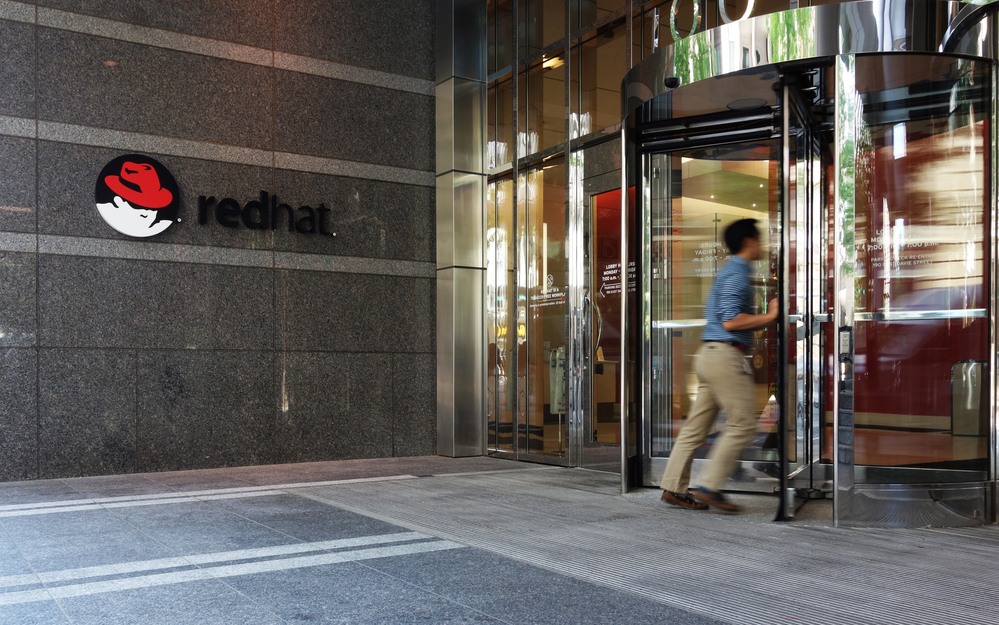
At this month’s Red Hat Summit 2024, Red Hat announced the expansion of Red Hat Lightspeed across its platforms. This strategic move integrates enterprise-ready AI across the Red Hat hybrid cloud portfolio, enhancing productivity and efficiency for both novices and experienced professionals. The new offerings, Red Hat OpenShift Lightspeed and Red Hat Enterprise Linux Lightspeed, leverage generative AI (GenAI) to simplify complex processes and improve user experiences.
See also: Red Hat Marries Linux and AI into a Platform for AI
Transforming IT Operations with Red Hat Lightspeed
Red Hat Lightspeed, first introduced with the Red Hat Ansible Automation Platform, addresses industry-wide skills gaps and the growing complexity of hybrid cloud environments. By incorporating GenAI, Lightspeed helps users deploy, manage, and maintain systems more accurately and efficiently. This AI-driven approach frees IT teams from routine tasks, allowing them to focus on innovation.
Integrating generative AI with IT platforms extends existing capabilities and enhances innovation in automation, contributing to more scalable and efficient operations.
Simplifying Application Management
Red Hat OpenShift, considered by many to be the leading hybrid cloud application platform powered by Kubernetes, now includes OpenShift Lightspeed. This integration applies GenAI to streamline the deployment and management of both traditional and cloud-native applications. OpenShift Lightspeed supports various scenarios, such as autoscaling recommendations when clusters reach capacity, optimizing resource allocation, and ensuring efficient application lifecycle management.
For instance, OpenShift Lightspeed can suggest enabling autoscaling, recommend appropriate instance sizes based on public cloud hosting, and even propose using GitOps to standardize configurations across clusters. This capability is especially beneficial for novices learning the platform and experts seeking to maximize efficiency.
Enhancing Linux Management
Red Hat Enterprise Linux Lightspeed aims to simplify the deployment, management, and maintenance of Linux environments. This platform leverages GenAI to assist users in addressing everyday challenges and emerging issues. For example, when a new Common Vulnerability and Exploit (CVE) is announced, Red Hat Enterprise Linux Lightspeed can alert administrators about security advisories, identify affected systems, and help schedule updates during maintenance windows—all through intuitive commands.
This AI-driven approach builds on Red Hat’s extensive experience in enterprise Linux, making it easier for both novice admins and seasoned IT professionals to manage complex environments efficiently.
Advancements in Red Hat Ansible Lightspeed
Since its release in 2023, Red Hat Ansible Lightspeed has seen continuous improvements designed to enhance the overall user experience and the relevance of code recommendations. These refinements have been pivotal in making the platform more efficient and user-friendly, addressing the diverse needs of its users.
By focusing on these key advancements, Red Hat Ansible Lightspeed continues to set the standard for automation platforms, delivering powerful, user-friendly solutions that meet the evolving needs of modern IT environments.
Model Customization and Tuning
One of the most significant advancements in Ansible Lightspeed is the integration of IBM watsonx Code Assistant. This feature allows users to customize and tune the model using their existing Ansible content. By leveraging this capability, organizations can train the model on their specific automation patterns and requirements, leading to more accurate and relevant code recommendations. This personalized approach improves the quality of automation scripts and increases the overall efficiency of IT operations.
Enhanced Administrative Dashboard
Introducing an enhanced administrative dashboard gives administrators comprehensive insights into the platform’s usage. This dashboard includes telemetry data, metrics for GenAI requests, and user activity insights. By monitoring these metrics, administrators can optimize the usage and performance of Ansible Lightspeed, ensuring that the platform meets their organization’s specific needs. The ability to track and analyze usage patterns helps identify areas for improvement and make informed decisions about resource allocation.
Tailored Code Recommendations
Ansible Lightspeed’s code recommendation system has been fine-tuned to provide more contextually relevant suggestions. This improvement means that users receive recommendations that are more aligned with their existing workflows and automation scripts. By understanding the context in which certain tasks are performed, the system can offer more precise and actionable suggestions, reducing the time and effort required to develop and maintain automation scripts.
Integration with Open Source Projects
Red Hat’s commitment to innovation is evident in its plans to extend the capabilities of Ansible Lightspeed by integrating GenAI into other open-source projects, such as Konveyor. This integration aims to bring advanced AI-driven features to a broader range of tools and platforms, further enhancing the value of the Red Hat Lightspeed portfolio. By incorporating GenAI into these projects, Red Hat continues to support the open-source community and drive the development of innovative solutions.
The Future of AI and Hybrid Cloud
Red Hat’s vision for AI across the hybrid cloud involves running AI workloads where data resides, whether in data centers, public clouds, or at the edge. This approach ensures consistency and compliance while addressing data sovereignty and operational integrity challenges. By integrating AI into its platforms, Red Hat enables IT organizations to quickly acquire new skills and scale existing expertise.
The goal of Red Hat Lightspeed is to put production-ready AI into the hands of IT professionals, enabling rapid skill acquisition and scaling expertise across the hybrid cloud.
Looking ahead, Red Hat may further enhance Ansible Lightspeed with additional features and capabilities. Potential future developments could include deeper integration with other Red Hat products, more advanced AI algorithms for predictive maintenance, or expanded support for edge computing environments. These enhancements would help ensure that Ansible Lightspeed remains at the forefront of automation technology, providing users with cutting-edge tools to manage their IT infrastructure.
See also: The Convergence will be a Powerful Trend in Technology
Pioneering AI Integration for Enhanced Productivity and Innovation
Red Hat’s expansion of Lightspeed across its hybrid cloud portfolio marks a significant step in integrating AI to enhance productivity, simplify operations, and drive innovation. As hybrid cloud adoption grows, these AI-infused platforms will play a crucial role in helping IT teams navigate complexity and unlock new levels of efficiency.
OpenShift Lightspeed is expected to be available in late 2024, with early access information available for interested users. Additionally, Red Hat Enterprise Linux Lightspeed is currently in the planning phase, with more details to come. However, the new features of Ansible Lightspeed are already generally available.

Elizabeth Wallace is a Nashville-based freelance writer with a soft spot for data science and AI and a background in linguistics. She spent 13 years teaching language in higher ed and now helps startups and other organizations explain – clearly – what it is they do.


